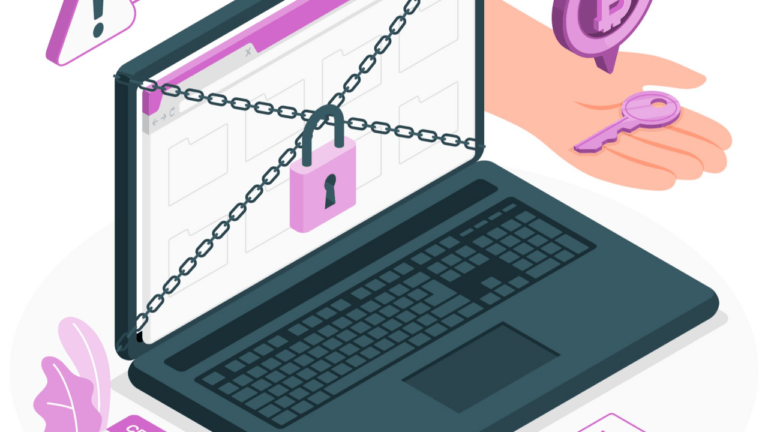
Cyber threats continue to evolve at an alarming pace, with ransomware emerging as one of the most destructive attack methods. However, a new trend is making ransomware even more accessible to cybercriminals—Ransomware-as-a-Service (RaaS). This model allows even those with minimal technical expertise to launch sophisticated ransomware attacks, posing an unprecedented threat to businesses of all sizes. In this blog, we’ll explore the rise of RaaS, how it works, its implications, and what organizations can do to defend themselves.
What is Ransomware-as-a-Service (RaaS)?
Ransomware-as-a-Service is a cybercrime business model where ransomware developers create malicious software and lease it out to affiliates (attackers) who execute attacks. In return, the developers receive a percentage of the ransom payments. This model has significantly lowered the barrier to entry for cybercriminals, leading to an increase in ransomware attacks across industries.
How RaaS Works
The RaaS model is structured much like legitimate Software-as-a-Service (SaaS) businesses. Here’s how it operates:
- Developers create ransomware – Skilled cybercriminals develop sophisticated ransomware strains and maintain them as a service.
- Affiliates sign up – Individuals or groups sign up for RaaS programs, often found on the dark web, and receive pre-configured ransomware.
- Distribution of ransomware – Affiliates use phishing emails, malicious ads, or compromised websites to infect victims.
- Execution and ransom demand – Once the malware encrypts files, a ransom note is displayed, demanding payment in cryptocurrency.
- Profit sharing – Affiliates pay a percentage (often 20-30%) of their ransom earnings to the ransomware developers.
Notable RaaS Strains
Several high-profile RaaS operations have wreaked havoc in recent years. Some of the most notorious include:
- REvil (Sodinokibi) – Known for targeting businesses worldwide, including major corporations.
- DarkSide – Famously responsible for the Colonial Pipeline attack in 2021.
- LockBit – A highly efficient ransomware strain that automates encryption to maximize impact.
- Conti – Known for aggressive tactics and public data leaks when victims refuse to pay.
Why RaaS is Growing Rapidly
The increasing popularity of RaaS can be attributed to several factors:
- Ease of Access – Cybercriminals no longer need advanced programming skills to execute attacks.
- High Profitability – The financial success of ransomware attacks incentivizes more actors to participate.
- Anonymity with Cryptocurrency – Attackers can demand ransom payments in Bitcoin or Monero, making it difficult for law enforcement to track transactions.
- Scalability – RaaS developers can recruit hundreds of affiliates, expanding their reach exponentially.
The Impact on Businesses
The rise of RaaS poses a serious threat to businesses, governments, and individuals. Some key risks include:
- Financial Losses – Ransom demands can range from thousands to millions of dollars.
- Operational Disruptions – Businesses face downtime, lost revenue, and reputational damage.
- Legal and Compliance Issues – Data breaches resulting from ransomware can lead to hefty regulatory fines.
- Supply Chain Vulnerabilities – Attacks on suppliers can have a cascading effect on entire industries.
How Organizations Can Defend Against RaaS Attacks
Given the growing threat of RaaS, businesses must adopt proactive security measures:
1. Implement a Zero Trust Framework
- Assume no user or device is trustworthy by default.
- Use multi-factor authentication (MFA) to secure user access.
- Restrict user permissions based on job roles.
2. Enhance Endpoint Security
- Deploy next-generation antivirus (NGAV) and endpoint detection and response (EDR) solutions.
- Use network segmentation to contain malware spread.
3. Regularly Backup Data
- Maintain secure, offline backups to recover from ransomware attacks.
- Test backup restoration processes frequently.
4. Employee Training & Awareness
- Conduct regular phishing simulations and cybersecurity awareness training.
- Educate employees on recognizing suspicious emails and links.
5. Patch and Update Systems
- Keep operating systems, applications, and security software up to date.
- Apply security patches promptly to close vulnerabilities.
6. Deploy Advanced Threat Intelligence
- Leverage AI-driven threat detection tools to monitor for suspicious activity.
- Invest in a Security Information and Event Management (SIEM) system for real-time threat analysis.
Ransomware-as-a-Service is changing the cybersecurity landscape, making ransomware attacks more frequent and damaging. Organizations must stay ahead of these threats by implementing robust security measures, educating employees, and adopting a proactive cybersecurity strategy. With the right defenses in place, businesses can mitigate the risks associated with RaaS and protect their critical assets from cybercriminals.
At Trevonix, we specialize in helping businesses strengthen their cybersecurity posture against emerging threats like RaaS. Contact us today to learn how our IAM and security solutions can safeguard your organization from cyber threats.